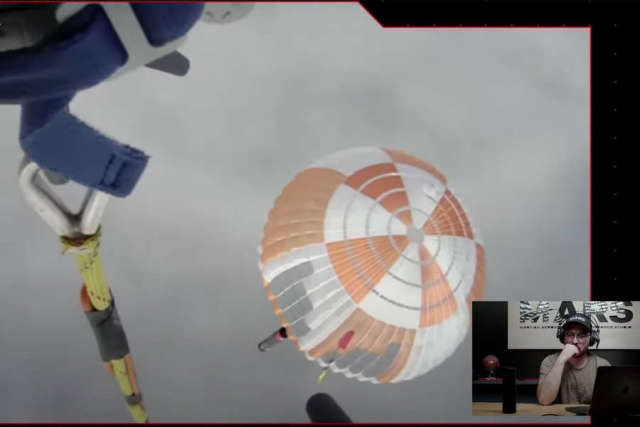Rocket Lab company caught a space rocket by helicopter for the first time in history
On the night of May 3, for the first time in the history of world cosmonautics, it was possible to return the spent rocket stage with the help of parachutes and a helicopter. This is part of the plan of the American-New Zealand company Rocket Lab to create a reusable transport system. "Newspaper.Ru" followed the launch and found out from Pavel Pushkin, a former Russian space "private citizen", what are the advantages of such a scheme, and how it was planned to be used in the USSR.
Rocket Lab company caught the spent first stage of the Electron rocket with the help of a helicopter. The launch and descent were broadcast on the company's YouTube channel.
Electron is an ultralight rocket with a payload of about 250 kilograms and a height of 17 meters. Such small size and weight allowed the company to use a number of unusual technologies to simplify the design - for example, Rutherford engine turbopumps run on batteries, and not by burning part of the fuel in a small combustion chamber.
For a long time, Rocket Lab existed in a narrow economic niche: it launched small satellites into unusual orbits (for example, with a high inclination), for which it is difficult to recruit several clients for a joint launch on a heavy rocket. But in the last few years, the company has announced development, unveiled plans for a heavier Neutron rocket, and modified the Electron to make it possible to reuse the first stage.
The mission was called There And Back Again, as a reference to Tolkien's book The Hobbit, or There and Back Again. Two minutes after the launch from the cosmodrome in New Zealand, made on Tuesday night (Moscow time), there was a separation of the stages. The second stage continued the acceleration of 34 satellites, and the first began the descent to the calculated area. At an altitude of about 13 kilometers, a braking parachute designed for high speed came out, and at an altitude of six kilometers, the main one was released.
The rocket continued its smooth descent at a vertical speed of 10 meters per second. After a while, the pilot of the Sikorsky S-92 helicopter noticed her and went to intercept her. At an altitude of two kilometers, he managed to hook the rocket's parachute with a hook on a cable and, thus, catch it.
- said the head of the company, Peter Beck.
However, some time after the success, he announced that the helicopter pilot realized that the load was too high. The helicopter unhooked the step, and it landed gently. It was picked up by a ship and, according to the host of the broadcast, the stage is still in excellent condition. Now engineers will have to conduct a detailed analysis and find out whether it is possible to launch a rocket into space again. If the answer is yes, the company will be able to significantly reduce the cost of new launches, as does SpaceX, whose stages sit on the tail with the help of rocket engines.
The There And Back Again mission was commented on by Pavel Pushkin, an independent space expert, and previously the director of the Cosmocourse company, which tried to create a Russian private rocket to launch space tourists.
- he said.
The main problem when picking up spacecraft is their weight and helicopter carrying capacity. In addition, with the increase in the weight of the rocket stage, the dimensions of the parachute grow, which is why the helicopter begins to blow it away. A parachute return is a good alternative to a jet landing on legs, as it eliminates the need to calculate the dynamics and leave fuel for the braking impulse, the expert believes.
In addition, according to Pushkin, a similar scheme was planned to be used in the Soviet Union to rescue the accelerators of the Energia -Buran system with the help of two helicopters. This spacecraft was supposed to be reusable, like "shuttles". The Space Shuttle dropped solid-fuel rocket boosters into the ocean for reuse, and the Buran launched over land and relied on more fragile liquid side stages. However, the helicopter rescue project did not come out of the early stage of development.
Earlier, Rocket Lab presented a returnable Neutron rocket with a jet landing. It is much more load-lifting than Electron, and differs from competitors by a head fairing integrated into the first stage. As a result, the rocket becomes like a matryoshka doll, as if it "spits out" the second stage and closes the doors back.
Vasily Zaitsev

